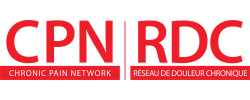| En Français | Return |
Patient Evidence Summary

Doctor, I have rotator cuff-related shoulder pain. Can learning more about my condition help me manage my pain better?
Best practice education, which includes guidance on managing shoulder pain through simple self-care and understanding how pain works, helps patients feel reassured about their shoulder pain and confident in continuing their daily activities. Including additional information on how pain affects the body (pain science messages) offers a little more reassurance. This helps patients understand that even though their pain is real, using their arm is unlikely to cause more damage to their shoulder.
What is the evidence?
SUMMARY OF FINDINGS
Best practice education vs Pain science messages vs Structure-focused education
| Outcome | Best practice education | Best practice education + Pain science messages | Structure-focused education |
|---|---|---|---|
| Reassurance that the pain is not being caused by a serious condition | High reassurance, with most participants feeling about half a point (0.5) on a scale of 0 to 10 more confident in managing their pain. | Slightly higher reassurance when added to best practice education, making participants feel a little bit more confident, about 0.2 points more on a scale of 10. | Did not help participants feel as reassured about managing their pain as best practice education . |
| Safety of continuing daily activities | High reassurance, making most participants feel a little more than half a point (0.6) on a scale of 0 to 10 more confident in managing their pain. | Slightly higher reassurance when added to best practice education, making participants feel a little bit more confident, about 0.2 points more on a scale of 10. | Did not help participants feel as reassured about managing their pain as best practice education. |
Reassurance levels were measured on a scale from 0 (not reassured at all) to 10 (completely reassured).
What kind of study was this?
This was a three-arm, randomised controlled trial.
Who? This study included 2,237 people who experienced rotator cuff-related shoulder pain. The participants were adults with an average age of 46 years. These individuals had been dealing with shoulder pain for varying durations, with many experiencing pain for more than a year. Many of the people who participated were highly educated.
What? The study compared three different educational interventions, each designed to provide varying levels of reassurance and education about managing shoulder pain. All interventions were purely educational and delivered online. They consisted of structured modules including video presentations, written materials, and self-assessment tools. These were designed for participants to do on their own to improve their understanding and management of shoulder pain.
Educational Strategies Compared:
Intervention | vs | Comparison Intervention |
|---|---|---|
Best practice education - focuses on reassurance that shoulder pain is typically not due to a serious condition and encourages safe continuation of daily activities. Recommends heat, cold, simple pain medications or exercise to manage the pain. | Best practice education + Pain science messages Structure-focused education alone | |
Best practice education + Pain science messages - includes additional information about the science of pain to help further reduce anxiety and misconceptions about pain. | Best practice education alone Structure-focused education alone | |
| Structure-focused education - focuses on the shoulder structure (parts of the shoulder) as the cause of pain, which might lead to suggestions for more active treatments like surgery. | Best practice education alone Best practice education + Pain science messages |
Why was this research done?
Rotator cuff-related shoulder pain is a common problem that often leaves patients unsure about how to take care of their pain without making it worse. This uncertainty can lead to unnecessary anxiety and the avoidance of activities that might improve their condition. Recognizing the need for patient education, the study looked at which teaching methods help patients feel most confident and understand their shoulder pain better. Clear, reliable information is important as it gives patients the power to make informed decisions about their health, manage their pain with confidence, and potentially avoid costly and invasive procedures.
The findings showed that best practice education, particularly when added to pain science messages, was most effective in reassuring participants and increasing confidence in managing their pain. It is possible that learning online might be different from in-person, and since many participants in the study were highly educated, they might react differently than less educated participants. Overall, this research is important because it can help create better learning tools that health professionals can use to help patients understand their pain, how to manage it by themselves, and feel more comfortable doing so.
This Evidence Summary is based on the following article:
Zadro JR, Ferreira GE, Muller R, et al. Education can reassure people with rotator cuff-related shoulder pain: a 3-arm, randomised, online experiment. Pain. 2024 Apr 1;165(4):951-958. doi: 10.1097/j.pain.0000000000003102. Epub 2023 Dec 15. PubMed
Published: Wednesday, May 15, 2024
Please note that the information contained herein is not to be interpreted as an alternative to medical advice from a professional healthcare provider. If you have any questions about any medical matter, you should consult your professional healthcare providers, and should never delay seeking medical advice, disregard medical advice or discontinue medication based on information provided here.
|
This Evidence Summary was printed from the PAIN+ CPN website on 2025/04/01. To view other Evidence Summaries or to register to receive email notifications about new Evidence Summaries, please visit us at https://www.painpluscpn.ca/Articles/EvidenceSummaries |

|






 , McMaster University
, McMaster University